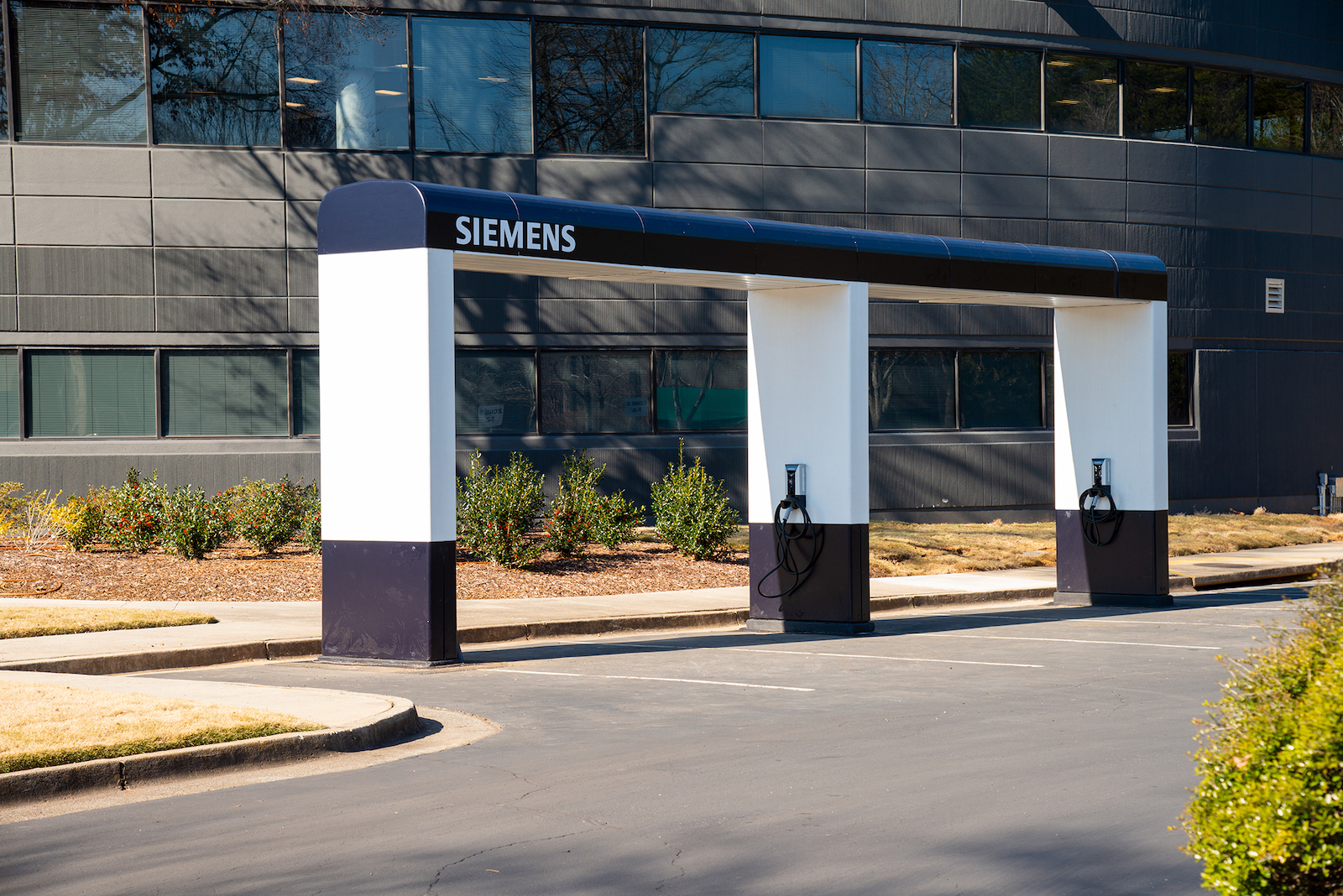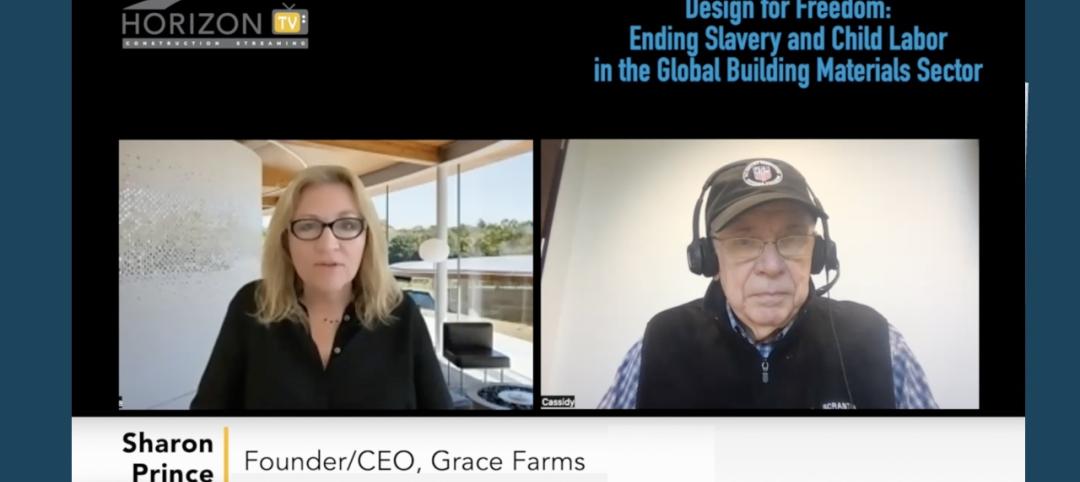Resembling a fueling station, VersiCharge XL—a new electric vehicle (EV) charging concept structure—can charge large numbers of EVs in outdoor areas ranging from small office building parking lots to last-mile logistics hubs to stadium parking lots.
The developers—Siemens Smart Infrastructure, which creates intelligent and adaptive infrastructure, and Nexii Building Solutions, a green construction technology company—say the modular, scalable solution is the industry’s first EV-charging system housing all the necessary electrical infrastructure components in an above-ground, enclosed, and low-carbon structure. The above-ground design minimizes disruption to existing parking lots, while also reducing on-site construction waste and environmental impact.
Rapidly developed in just six months last year, the innovative product was installed in only three days’ time in February at Siemens’ research and development hub for electrical products and e-mobility solutions in Peachtree Corners, Ga.
“The massive growth of electric mobility requires an easy and rapid expansion of a reliable and sustainable charging infrastructure. This specific concept shows how Siemens and its partners are working on new, innovative ideas to help support this growth in the US market,” Markus Mildner, CEO of eMobility at Siemens Smart Infrastructure, says in a statement.
The prototype uses Nexii’s building material Nexiite, which has similar properties as concrete but with significantly less embodied carbon, for the vertical structure supporting the Siemens Sentron Busway systems that power the EV chargers. The co-patented design combines Nexii’s sustainable building products and rapid delivery of green buildings with Siemens’ expertise in residential and commercial chargers, charging depots for commercial fleets, and infrastructure systems to power electrified bus lines.
“Construction and transportation are two of the biggest sources of carbon emissions driving climate change today,” Stephen Sidwell, cofounder and CEO of Nexii, says in a statement. “Bringing together Siemens and Nexii demonstrates the power of rapid ideation and development of solutions to some of the world’s biggest problems.”
Related Stories
Sustainability | Feb 8, 2023
A wind energy system—without the blades—can be placed on commercial building rooftops
Aeromine Technologies’ bladeless system captures and amplifies a building’s airflow like airfoils on a race car.
Mass Timber | Jan 27, 2023
How to set up your next mass timber construction project for success
XL Construction co-founder Dave Beck shares important preconstruction steps for designing and building mass timber buildings.
Concrete | Jan 24, 2023
Researchers investigate ancient Roman concrete to make durable, lower carbon mortar
Researchers have turned to an ancient Roman concrete recipe to develop more durable concrete that lasts for centuries and can potentially reduce the carbon impact of the built environment.
Standards | Jan 19, 2023
Fenestration Alliance updates liquid applied flashing standard
The Fenestration and Glazing Industry Alliance (FGIA) published an update to its Liquid Applied Flashing Standard. The document contains minimum performance requirements for liquid applied flashing used to provide water-resistive seals around exterior wall openings in buildings.
Products and Materials | Jan 18, 2023
6 innovative products for multifamily developments
Here are six innovative products for various multifamily developments, including a condominium-wide smart electrical system, heavy-duty aluminum doors, and prefabricated panels.
Products and Materials | Jan 18, 2023
Is inflation easing? Construction input prices drop 2.7% in December 2022
Softwood lumber and steel mill products saw the biggest decline among building construction materials, according to the latest U.S. Bureau of Labor Statistics’ Producer Price Index.
ProConnect Events | Jan 17, 2023
3 ProConnect Single Family events for Home Builders and Product Manufacturers set for 2023
SGC Horizon, parent company of ProBuilder, will present 3 ProConnect Single Family Events this year. At ProConnect Single Family, Home Builders meet in confidential 20-minute sessions with Building Product Manufacturers to discuss upcoming projects, learn about new products, and discover practical solutions to technical problems.
75 Top Building Products | Nov 30, 2022
75 top building products for 2022
Each year, the Building Design+Construction editorial team evaluates the vast universe of new and updated products, materials, and systems for the U.S. building design and construction market. The best-of-the-best products make up our annual 75 Top Products report.
Building Materials | Nov 2, 2022
Design for Freedom: Ending slavery and child labor in the global building materials sector
Sharon Prince, Founder and CEO of Grace Farms and Design for Freedom, discusses DFF's report on slavery and enforced child labor in building products and materials.
Building Materials | Aug 3, 2022
Shawmut CEO Les Hiscoe on coping with a shaky supply chain in construction
BD+C's John Caulfield interviews Les Hiscoe, CEO of Shawmut Design and Construction, about how his firm keeps projects on schedule and budget in the face of shortages, delays, and price volatility.

















